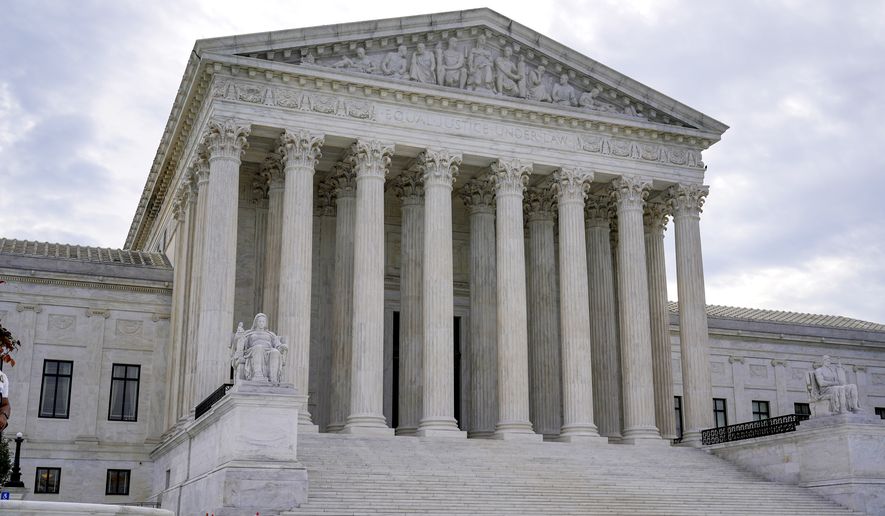The Supreme Court returned Monday to its marble courtroom in person for the first time in 18 months as they begin a session that promises to be highly charged, with the justices hearing disputes about abortion and gun rights.
The justices had worked remotely because of the COVID-19 pandemic, hearing oral arguments on the telephone.
Justice Brett M. Kavanaugh continued to work remotely Monday morning after he tested positive for the coronavirus last week, participating in the court’s two oral arguments via phone.
The audio feed of the arguments was livestreamed for the public, but only a limited number of reporters were allowed inside the courtroom with the justices and attorneys — a sign that the high court is slowly returning to its standard process.
“I have the honor to announce on behalf of the court that the October 2020 term of the Supreme Court of the United States is now closed and the October 2021 term is now convened. I’d like to begin by noting that Justice Kavanaugh will be participating in the argument today remotely,” Chief Justice John G. Roberts Jr. said after gaveling the court into session.
Before the pandemic, the justices, attorneys and reporters were accompanied by a limited number of people from the public for oral arguments. Audio of the hearings was not livestreamed but was released at the end of the week.
The Supreme Court closed to the public in March 2020, and the justices began working remotely like much of the rest of the country. During that time, the court heard 68 cases via teleconference, according to The Associated Press.
Closing the high court was unprecedented. The court postponed arguments in 1918 during the Spanish flu epidemic. A court spokesperson noted that court calendars were changed in August 1793 and in 1798 because of yellow fever.
The court’s makeup changed with the death of Justice Ruth Bader Ginsburg in September 2020. Justice Amy Coney Barrett filled her seat in November.
Monday marked the first time Justice Barrett was seated on the bench, after hearing cases only by telephone.
During the telephonic hearings, each justice had a certain amount of time to question attorneys about their arguments. When the justices are in the courtroom, they often interrupt one another, fighting for time to quiz attorneys.
On Monday, the justices tended to play off one another’s lines of questioning and even laughed at times.
Justice Clarence Thomas, who has largely remained quiet during oral arguments throughout his 30 years on the high court, hit the ground running with a series of questions.
All of the justices were vaccinated against COVID-19 this year and have been meeting in person for private conferences.
Justice Kavanaugh still worked remotely because he tested positive for COVID-19 in a breakthrough case last week. In a statement Friday, the high court said he had no symptoms.
First on the court’s docket was a dispute between Mississippi and Tennessee over the pumping of groundwater.
In the second case, a man was challenging sentencing guidelines after he broke into a mini-storage facility and burglarized 10 units. The high court will have to decide whether the event constituted one crime or a series of crimes.
The justices will grapple with gun and abortion rights in the coming weeks.
Next month, they will hear a challenge to New York City’s gun licensing for carrying a firearm outside the home.
In December, the justices will weigh in on whether to curtail Roe v. Wade, the landmark 1973 case that granted women the right to abortion until fetal viability, which is usually between 24 and 28 weeks.
The December hearing involves a challenge to Mississippi’s ban on abortions at 15 weeks. Lower courts halted the law from taking effect, but the high court agreed to review the case.
The court will issue opinions in the cases by the end of June, when the 2021 term comes to a close.
• Alex Swoyer can be reached at aswoyer@washingtontimes.com.




Please read our comment policy before commenting.